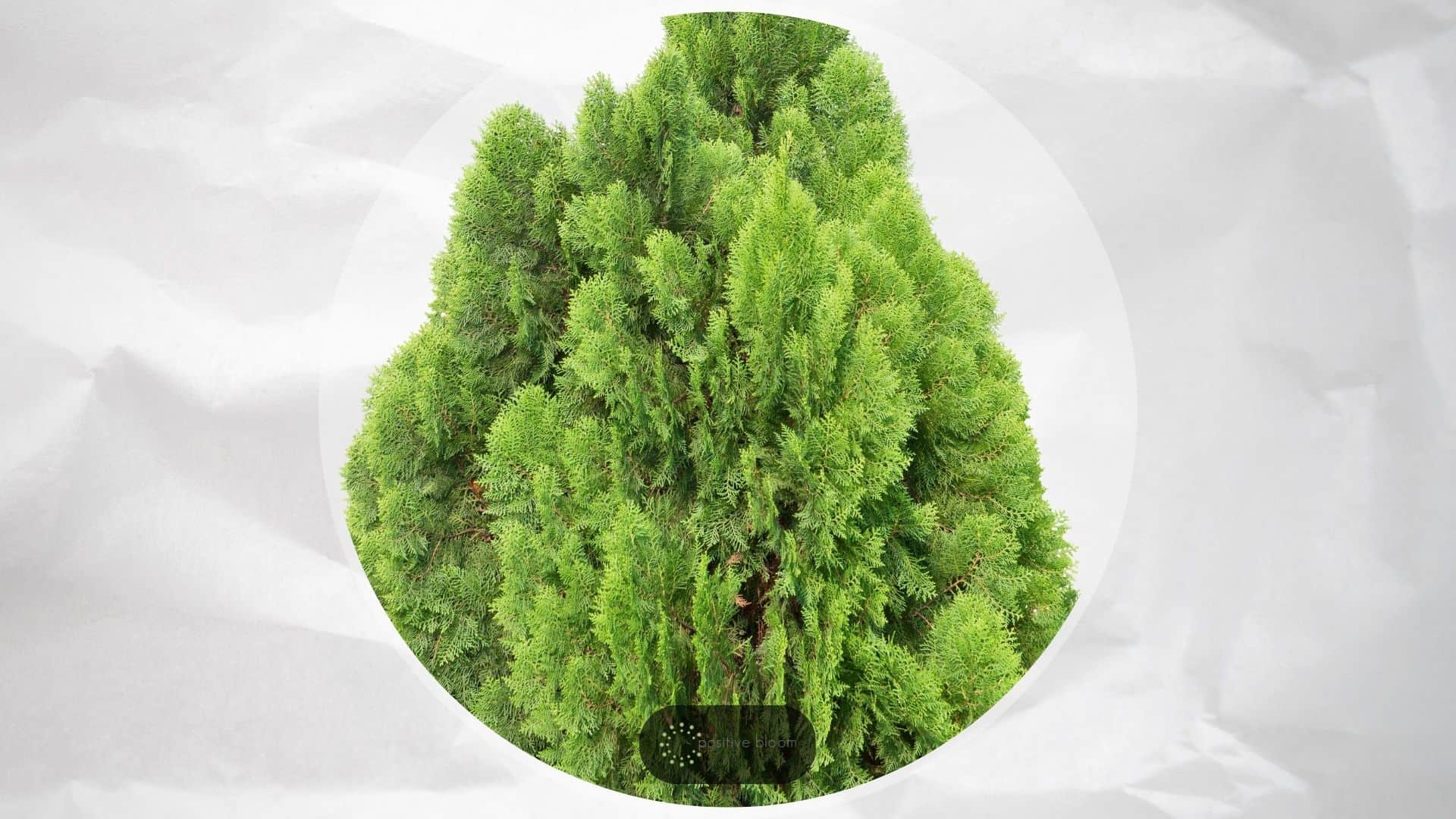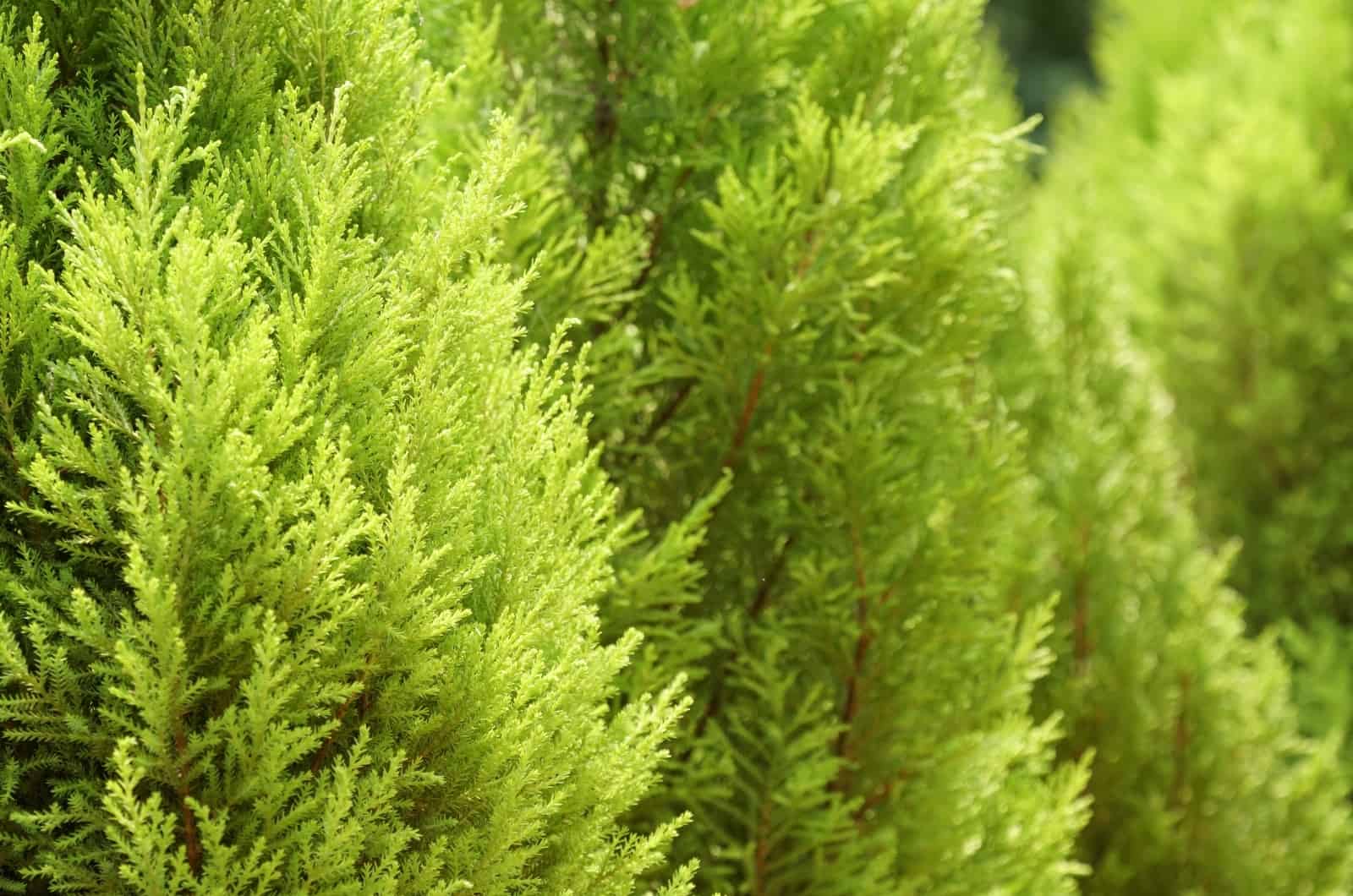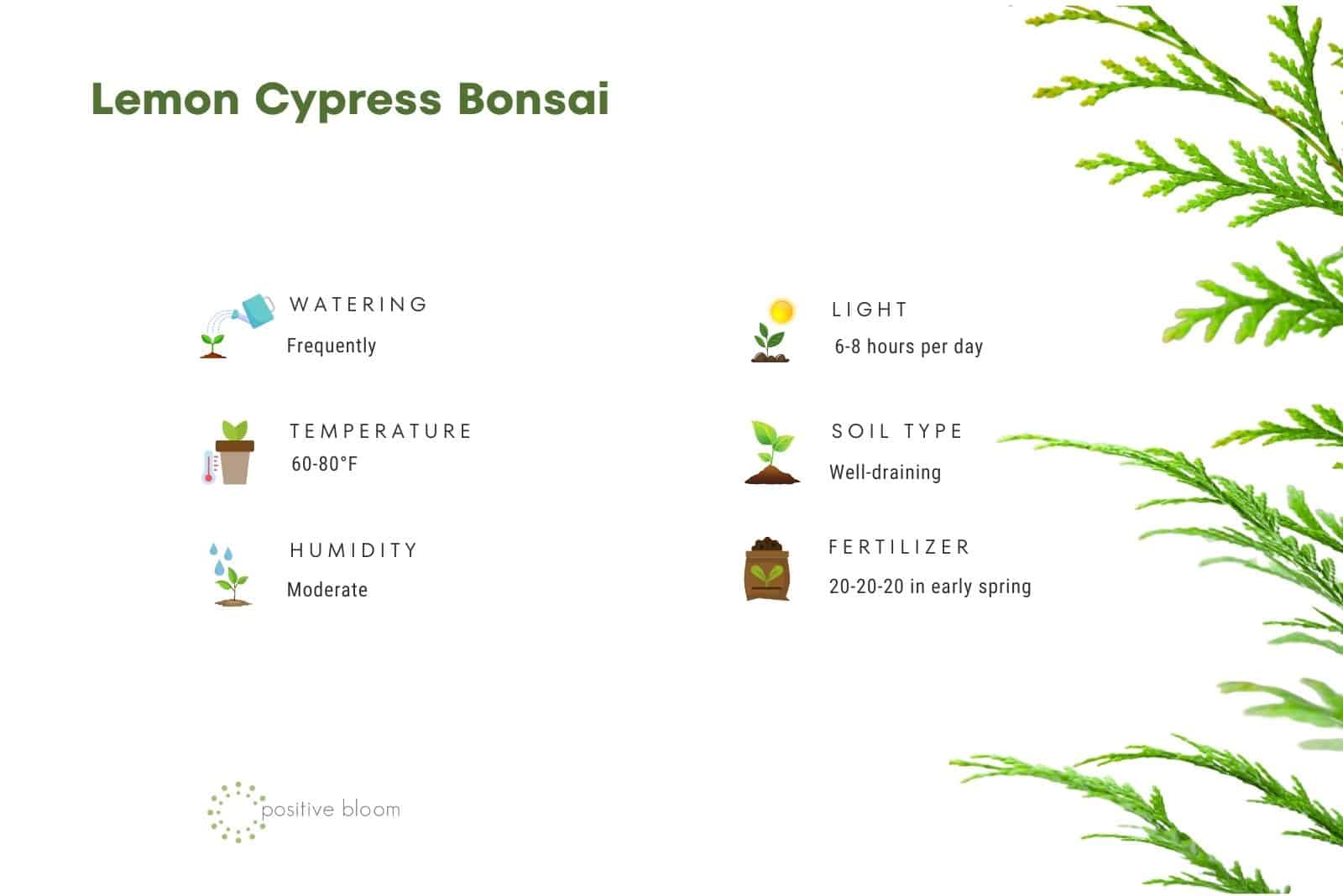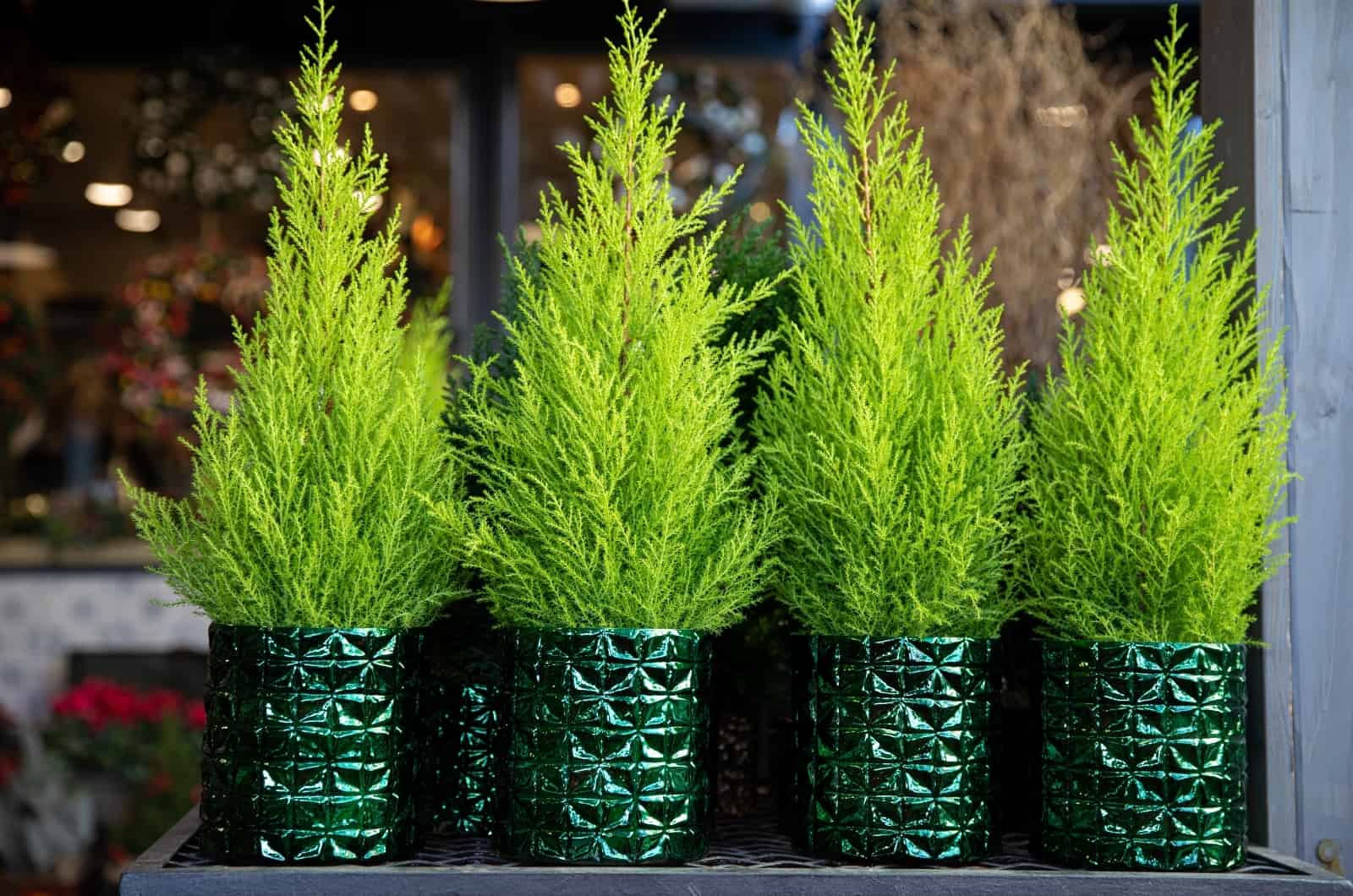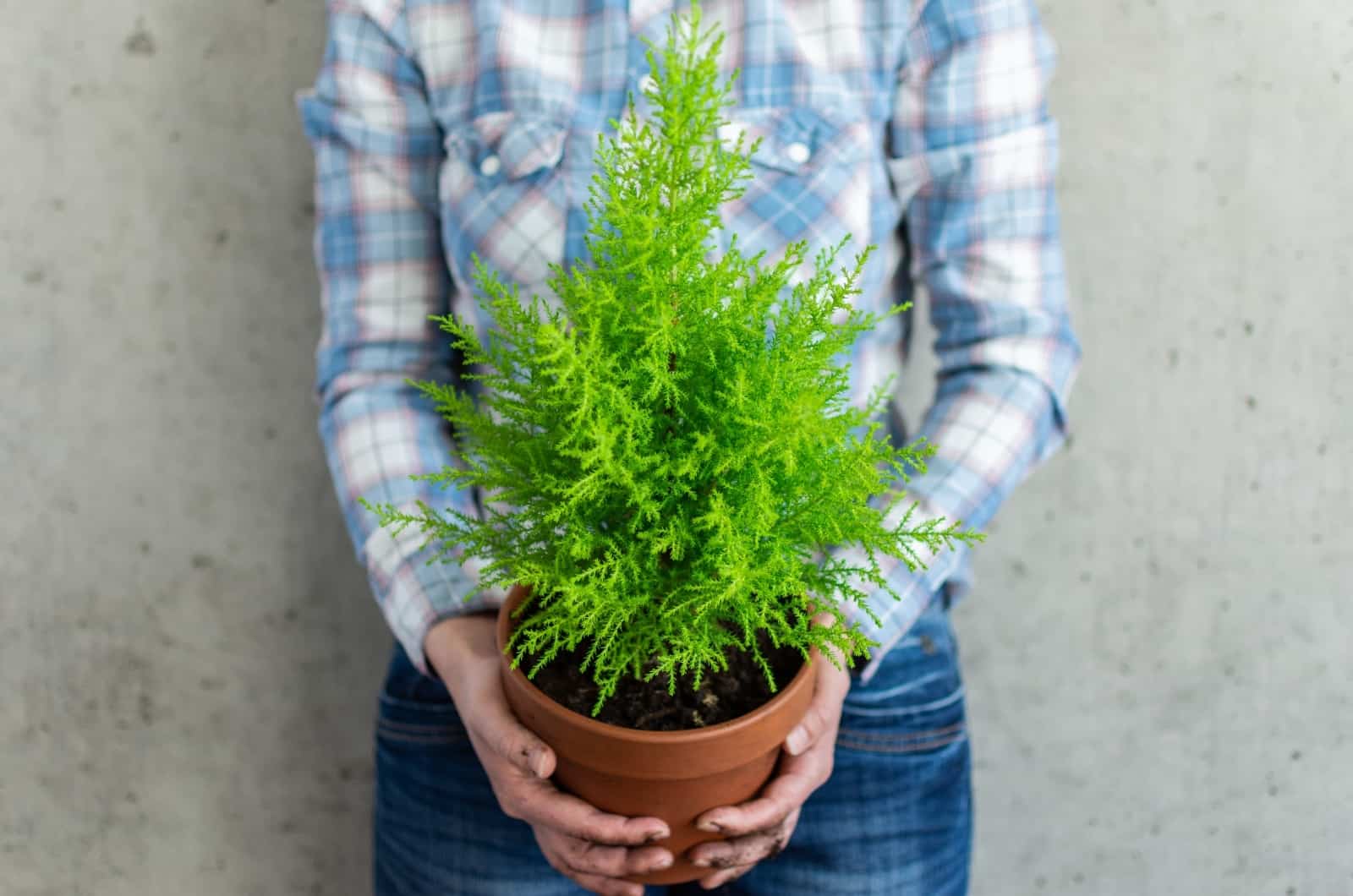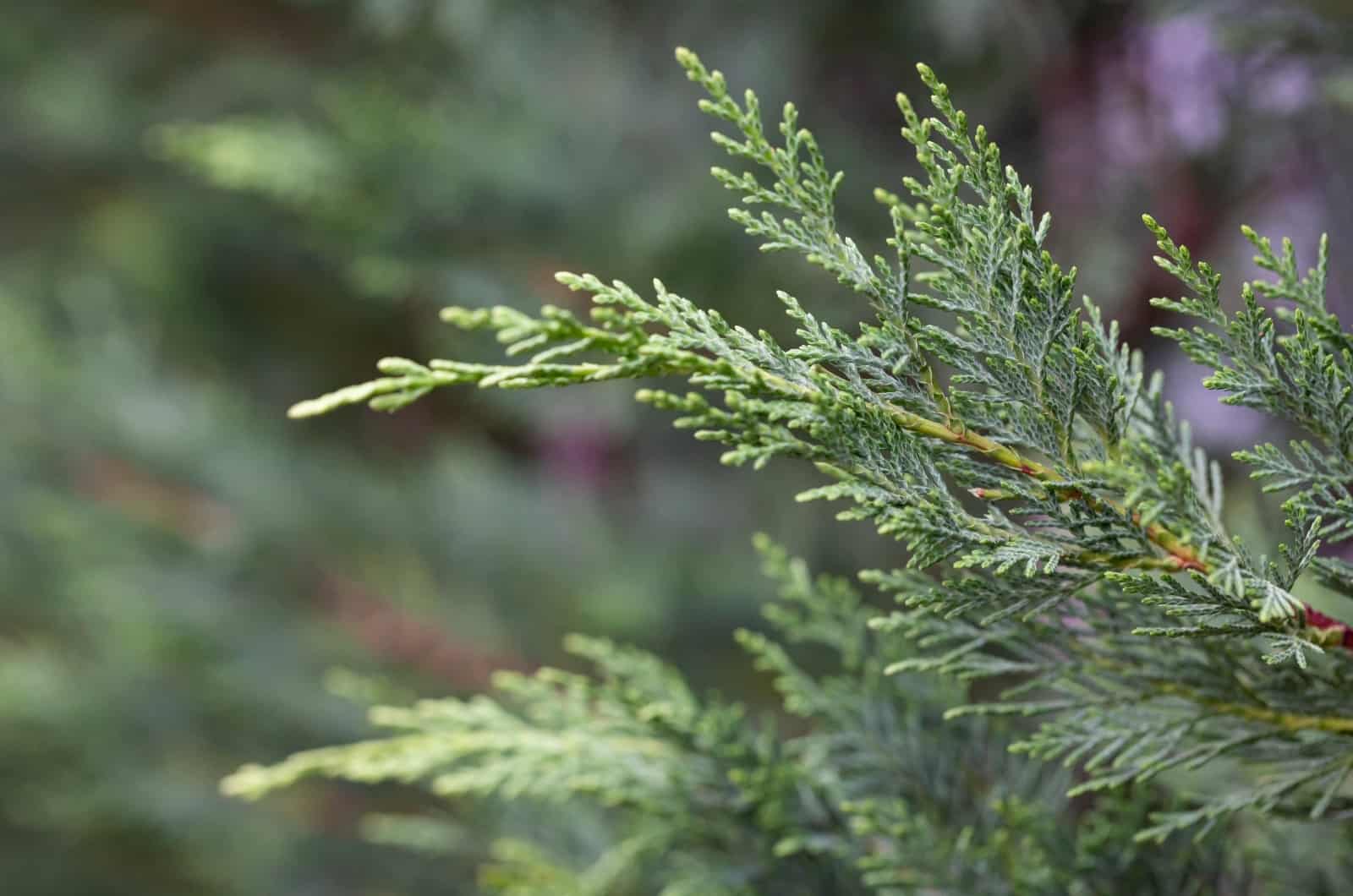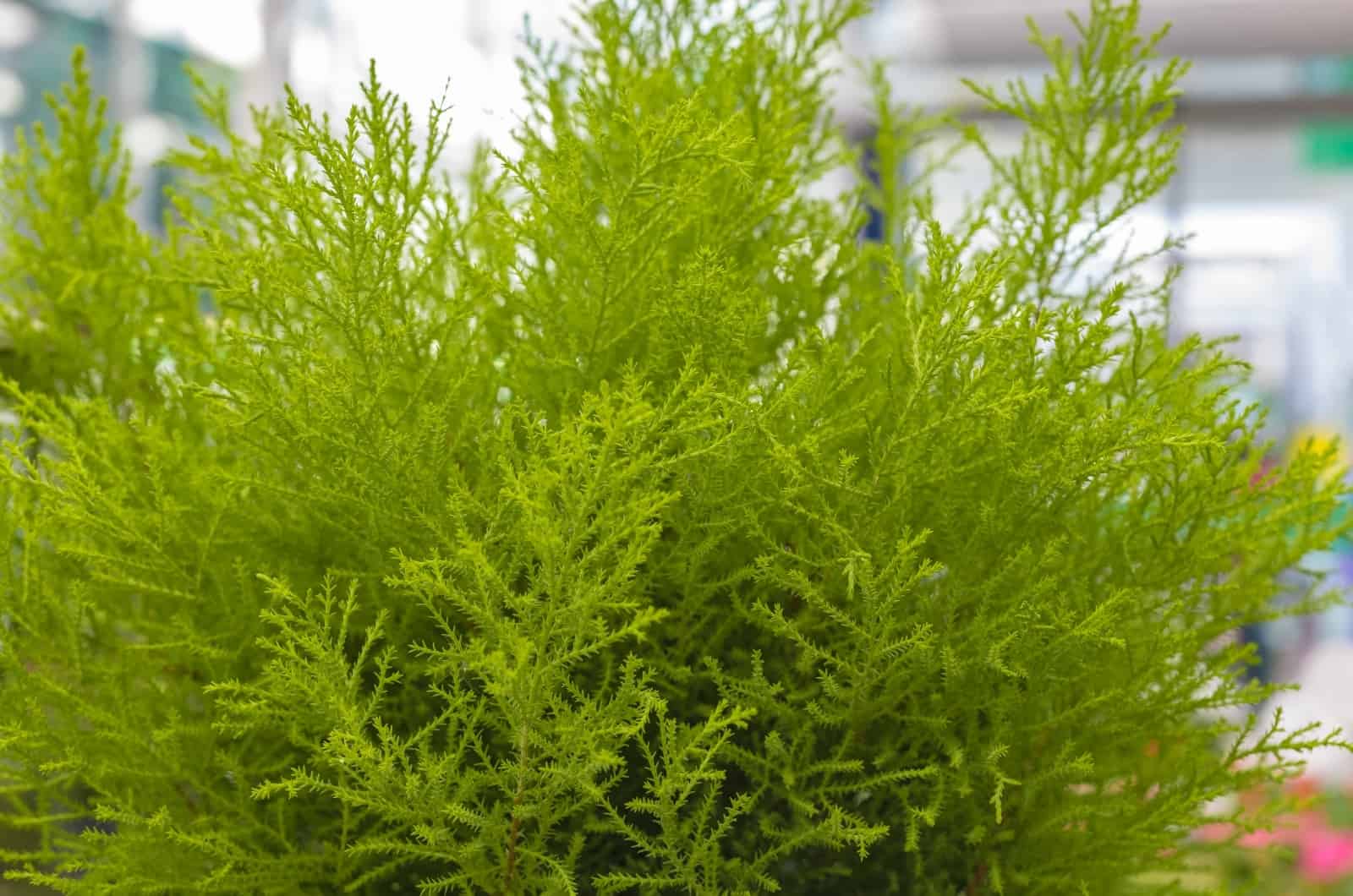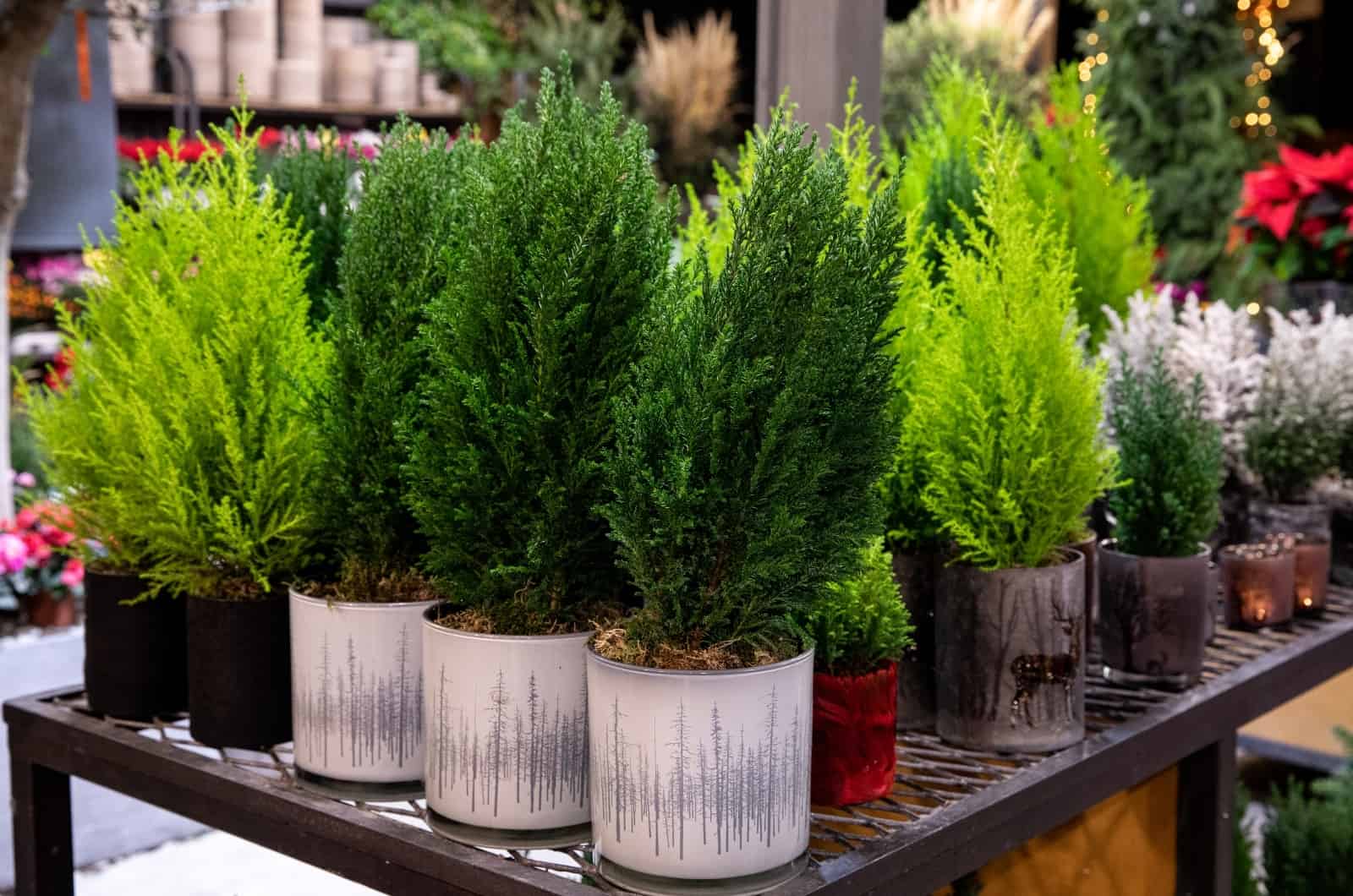Bonsai trees are an amazing addition to any garden, especially if you want to create a zen place that will bring you peace.
But how do you choose the right one? And how do you care for it properly?
Today, we’ll talk about the lemon cypress bonsai, an excellent choice for everyone who wants to add a splash of golden yellow-green color to their yard.
This plant does require a bit of care, but that’s the same for any bonsai. You’ll need to provide it with sufficient light, occasional watering, and prune it regularly to keep it the same size.
We’ll discuss all these factors in the following paragraphs and also mention some of the common issues you might encounter, as well as some tips for dealing with them so that you can keep this tiny cypress tree healthy and happy.
Before we get there, let’s learn the basic information about the lemon cypress bonsai:
[table id=637 /]
Lemon Cypress Bonsai Care Guide
I’m sure all gardeners have wondered how long it takes for a bonsai tree to grow so that they know when to expect to see the fruit of their labor, and there isn’t just one straight answer.
It really depends on the type of plant you grow and the environment in which you keep them.
For instance, the lemon cypress requires plenty of light, some water, and well-draining soil to thrive.
Of course, you do need to prune it regularly in order to maintain its size, and fertilize it to provide nutrients.
These are some of the things you need to do to keep it healthy, and we’ll discuss them in more detail in the following paragraphs.
Light Requirements
Bonsai tree light requirements aren’t the same for every plant, but when it comes to the lemon cypress, it would be best off in a full sun location where there’s light at least 6-8 hours each day.
These plants aren’t a fan of shade, although they do like it during the hottest part of the day.
Therefore, you should place this cypress tree in a spot that gets direct sunlight in the morning and evening, but a bit of shade at midday.
If you plan on taking it indoors, keep it on an east or west-facing windowsill.
Water And Humidity
Like most bonsai plants, this one requires regular and generous watering. You should never allow the soil to completely dry out, or else the beautiful yellowish-green needles would start to turn brown and lose their fresh scent.
The best watering technique is to irrigate this bonsai tree once the top of the potting medium feels dry to the touch.
When watering, you can use distilled or rainwater. Tap water is also fine, but let it sit in the air for about 24 hours before using it so that the chlorine can evaporate, otherwise it will build up in your plant’s soil.
Finally, you should always water it in the morning, or at least late afternoon, so that the plant can absorb some of the moisture before it evaporates. (Nighttime watering can lead to the development of fungal diseases, so you should avoid this if possible.)
Humidity
Lemon cypress care also involves keeping it at the right humidity levels, but this isn’t difficult.This plant tolerates moderate air moisture, and you won’t have to use humidifiers or any other technique of raising humidity to keep it happy.
However, if you keep it in temperatures above 80 degrees Fahrenheit, you should water it a bit more frequently since the potting mix will dry out faster.
Temperature
The lemon cypress is hardy down to USDA zone 7, but if you grow it as a bonsai, you shouldn’t expose it to temperatures lower than 50 degrees Fahrenheit or it may start browning, losing its needles, and even dying.
Once the outdoor temperatures are below this, you should take your lemon cypress bonsai indoors and place it in a bright location (such as near east or south-facing windows).
Keep it at around 60 degrees Fahrenheit in winter to reflect outdoor conditions, but still keep it safe. (These plant’s don’t really go dormant, but they do shed some needles, so don’t be alarmed if it happens.)
During the warmer months, this plant can handle temperatures up to (and a little above) 80 degrees Fahrenheit perfectly well.
Soil And Fertilizer
The best growing medium for this bonsai tree is well-draining and with a soil pH between 6.6-7.5.
The bonsai lemon cypress requires special soil made of a mix of pumice, akadama clay, and lava rock blended together in equal amounts.
You can also add some humic acid to increase the nutrients in the growing medium.
But if all this seems too much for you, you can simply buy a bonsai potting mix from your local garden center and be done with it!
Fertilizer
Even though bonsai care seems like anything but low-maintenance, at least you can save some time when feeding it.
This particular plant doesn’t require a regular fertilization schedule, and you can feed it in early spring just before the new needles push out.
Apply triple 20 fertilizer since it ensures your bonsai has enough nutrients for the whole year.
Water it thoroughly after feeding to prevent the plant food from burning its root system, and also to allow it to absorb the minerals all at once.
Repotting
Repotting bonsai trees is an essential part of their care, and you should do it every 2-3 years if you have a young tree, and every 3-5 years for older and already established bonsais.
The best time for repotting is in early spring since it’ll reduce transplant shock.
Once you notice that your plant is exhibiting stunted growth, legginess, roots peeking through the drainage holes, and that the soil has become compacted and unable to absorb moisture, the root ball has become too large and you should repot your bonsai.
When you take it out of the container, examine its roots and prune any long, mushy, and dark ones. (You can also do regular bonsai root pruning when repotting, but we’ll talk more about that in the following section).
After removing the unwanted roots, you can place some bonsai potting mix into the container, plant your bonsai in it, and fill the pot with more substrate.
Water your lemon cypress tree deeply, and take it back to its usual location.
Pruning
Pruning the lemon cypress tree is essential if you want to turn it into a bonsai. You can trim the new growth as soon as it starts to branch out. If you do it sooner, there’s a great chance the new shoots will die back come fall.
Of course, you do have to balance out the topiary and the roots, which is why root trimming is vital.
You can cut bonsai roots when repotting to save you some time and making a mess. Take your lemon cypress out of the pot, loosen the soil, and comb the roots as well as you can.
Use your bonsai cutters to first remove the long, thick, dark, and mushy roots. Then, shorten the entire root system.
However, remember never to prune more than one-third of the entire root system, or else your plant might not recover from it.
Common Issues With The Lemon Cypress Bonsai
When we look at the oldest bonsai tree in the world, we cannot help but wonder how it has lived for so long! Proper care is one of the main reasons, in addition to its naturally long lifespan.
Furthermore, if you take good care of your lemon cypress bonsai, not only will it live for a long time, but you also won’t have to worry about any pests or diseases befalling it.
However, something unpredictable can always happen, which is why we will discuss the common pests and diseases that can afflict this plant, as well as the best treatment for them, in the following paragraphs.
Pests
Luckily, the lemon cypress tree is highly fragrant and has a wonderful citrusy scent (hence the name) which repels pests.
Of course, there is always a slight possibility of pest infestation, so you should care for it properly. And if some aphids do appear, you can spray them with insecticides.
Diseases
This tree isn’t susceptible to many diseases, but it can suffer from root rot caused by overwatering. Therefore, you should be on the lookout for symptoms such as stunted growth, yellowing of the foliage, and a foul odor coming from the pot.
If you notice these signs, take your bonsai out of its container and prune away all the diseased roots. Then, spray them with some fungicide to prevent the return of the fungi, and repot it in a new and fresh potting mix and clean planter.
FAQ
What is the easiest tree to bonsai?
The Ficus tree is the easiest (and most popular) tree you can turn into a bonsai. It is low-maintenance and doesn’t mind the low humidity.
And if you want more green to decorate your home, you can go for other beginner-friendly bonsais, such as the Fukien tree, the Sweet plum, and the Hawaiian umbrella.
Can the cypress bonsai grow indoors?
Many cypress bonsai trees aren’t suitable for indoors, such as the Bold cypress or the Hinoki cypress.
On the other hand, there are some species of this evergreen tree that can survive indoors, such as the lemon cypress and the Italian cypress.
However, they also thrive better outside, and you should only take them indoors once the temperatures are too cold for them to survive.
Is the lemon cypress bonsai toxic to cats?
The bonsai lemon cypress is not toxic to cats or dogs. However, that’s not the case for all plants grown in this way.
Many bonsai trees are toxic to cats, such as juniper, fig, cherry, and plum trees, azaleas, etc.
Final Thoughts
The lemon cypress bonsai is a yellowish-green plant that can add so much to your garden, though it does require a little bit of care.
You should keep it in a well-drained medium and a full sun location where it will be exposed to 6-8 hours of sunlight per day, preferably in the morning and late afternoon.
Water it frequently to prevent the soil completely drying out, fertilize it once a year, and prune it regularly to maintain its tiny size.
The good news is that this fragrant bonsai isn’t that susceptible to pests and diseases, but you should still monitor it for pest infestations and try not to overwater it (although that’s not so common).
Enjoy this miniature tree, and until next time!

